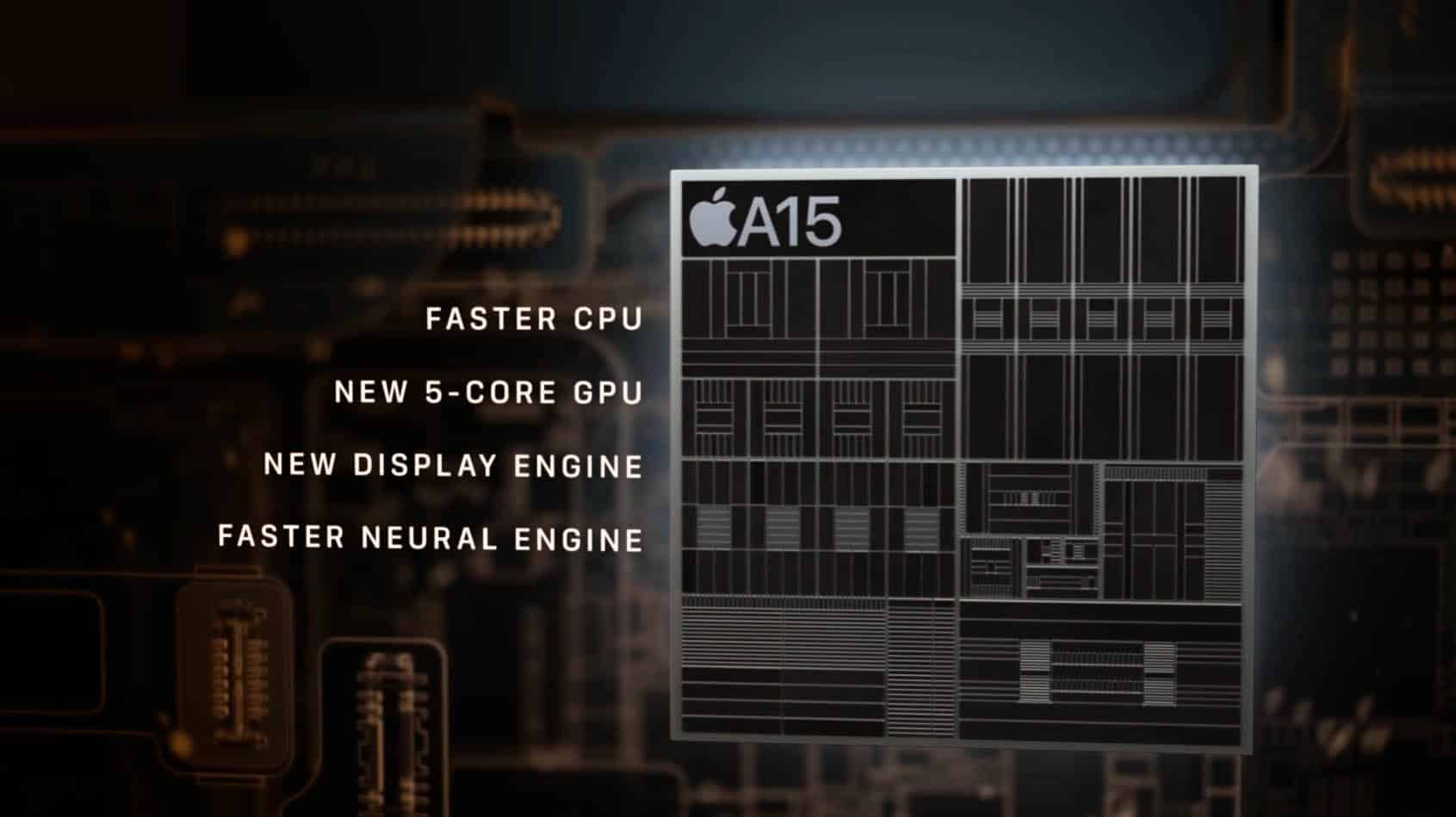Now that Apple has officially launched the new family of smartphones iPhone 13, it’s time to get to know one of the most outstanding elements in the new equipment, the new Apple A15 Bionic SoC (System-on-Chip). During the presentation of the new equipment, Apple stated that the new A15 Bionic will be able to offer up to 50% better performance than rival models.
Interestingly, Apple left aside the usual comparison with its predecessor, the A14 Bionic, used in the iPhone 12 range. Returning to the A15 Bionic, according to data reported by Apple, the processor of this SoC, which is manufactured by TSMC using the process 5nm N5P uses a high-performance dual-core and energy-efficient four-core frame, with a maximum clock frequency of 3.23 GHz, a significant increase over the A14 Bionic’s CPU clock of 2.99 GHz.
In terms of graphics controller, the A15 Bionic is available in two variants, a high performance with 5 cores, which will be used in the top models (iPhone 13 Pro and iPhone 13 Pro Max), which should offer performance up to and one variant with four cores, which will be used in the remaining models (iPhone 13 and iPhone 13 Mini), as happened with the GPU of the A14 Bionic.

According to Apple, this new 5-core GPU is capable of being up to 50% higher than the GPU used in rival SoCs, with the four-core variant offering up to 30% higher performance. Although no more data has been reported about it, performance tests have already been published (Geekbench 5 Metal) that reveal the GPU performance improvements of the new A15 Bionic compared to its predecessors, the A14 Bionic and A13 Bionic:
| SoC | Model | Operating system | Resultado (Geekbench 5 Metal) |
| A15 Bionic | iPhone 13 (iPhone 14.2) | iOS 15.0 | 14 216 |
| A14 Bionic | iPhone 12 Pro (iPhone 13.3) | iOS 14.x | 9 123 |
| A13 Bionic | iPhone 11 Pro (iPhone 12.3) | iOS 14.x | 7 338 |
Moreover, it remains to mention the new Neural processing unit, which uses a 16-core structure, with the capacity to process up to 15.8 trillion operations per second, which is used for several new features, such as image processing captured by the cameras, or other features such as the Live Text function within the camera app on the new iOS 15 operating system.
–


